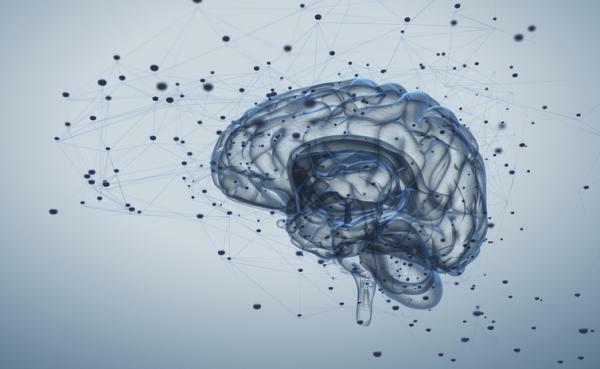
The world is perceived through different senses, but many practices that are carried out today determine that there is a predominance of vision over the rest of the senses. It is understandable that the vision has a great influence, since the current world presents diverse peculiarities that are observable through the vision. However, this unfolds a big question: What happens when we do not have vision as a possible way of appreciating something? What could happen when there are difficulties regarding this sense?
There are people who suffer from conditions in the visual system that prevent them from understanding the objects that appear in their lives. This problem can give rise to various complexities that affect the development of interpersonal relationships. Having reliable data about this issue can provide tools to deal with it. For this reason, in this Psychology-Online article, we will talk about the Balint syndrome: what is it, causes, symptoms and treatment.
Index
- What is Balint syndrome
- Causes of Balint syndrome
- Symptoms of Balint syndrome
- Treatment of Balint syndrome
What is Balint syndrome.
Balint syndrome is a medical disorder linked to brain lesions in different sectors of the cerebral cortex. As a consequence, the visual system is altered, since there is a direct relationship between vision and the posterior parietal lobe.
In other words, Balint syndrome is a neurological disease involving disorientation in the visual field of the person who suffers from it. This disease triggers the following consequences:
- apraxia: Difficulty in coordination that prevents control of intentional movement, for example, moving an object.
- simultagnosy: inability to see two objects together at the same time.
- agnosiaDifficulty recognizing various objects. In this article, we tell you what types of agnosia exist.
- optic ataxia: impossibility of coordinating the visual field and the motor.
Causes of Balint syndrome.
This pathology can manifest itself due to different factors. Next, we will develop the main causes of Balint syndrome:
- neurological damage: In the vast majority of cases, Balint syndrome occurs due to lesions in various areas of the brain. Likewise, cerebrovascular accidents and head injuries can cause a lack of blood supply that produces this disease.
- Neurodegenerative diseases: It is possible that there are other conditions that act as triggers for Balint syndrome, such as dementia. In this article you will find information about the Neurocognitive disorders: what they are, types, causes and treatment.
- HIV: This disease can also be linked to Balint syndrome due to the harmful effects it has on the human body.

Balint syndrome symptoms.
In order to provide greater clarity about this neurological disease, below, we will show you the most important symptoms of Balint syndrome:
- Alterations in visual coordination.
- Inability to recognize everyday objects.
- Difficulty following the same object within the visual field.
- Inability to recognize two objects that are within the visual field.
It is worth mentioning that the presence of any of these characteristics of Balint syndrome does not necessarily imply that the disease is suffered. To determine the presence of this clinical picture, it is essential that the diagnosis is made by a health professional.
Treatment of Balint's syndrome.
Despite the consequences of this clinical picture, there are currently ways to treat Balint syndrome effectively. Next, we will show you the best treatments for this neurological disease:
- occupational therapy: a space dedicated to providing certain therapeutic strategies that allow the patient to carry out daily activities. Furthermore, occupational therapy is an area that focuses on helping people with different disorders, both physical and cognitive. Therefore, patients with Balint syndrome can improve thanks to the resources of occupational therapy.
- Palliative treatment: Although Balint syndrome does not have a cure that remits the symptoms, the truth is that they can be lessened under certain treatments. Palliative treatments serve to take care of and prevent the secondary effects derived from this clinical condition.
- psychological therapy: beyond the fact that it is a neurological disease, it is important to pay attention to the effects it can have on the person's thoughts, emotions and behaviors. Therefore, psychological therapy helps to cope with complicated situations in a more pleasant way.

This article is merely informative, in Psychology-Online we do not have the power to make a diagnosis or recommend a treatment. We invite you to go to a psychologist to treat your particular case.
If you want to read more articles similar to Balint syndrome: what it is, causes, symptoms and treatment, we recommend that you enter our category of Clinical psychology.
Bibliography
- Carvajal-Castrillón, J., Gil Aguirre, L., Lopera Restrepo, F. (2009). Progressive visuospatial agnosia: a case of posterior cortical atrophy. CES Psychology Magazine, 2 (1), 65-78.
- Custodio, N., Lira, D., Herrera Pérez, E., Montesinos, R., Guevara-Silva, E., Núñez Del Prado, L., Castro-Suárez, S., Mar, M., Cuenca, J.., Cortijo, P. (2013). Two cases of posterior cortical atrophy, dementia that begins with visual symptoms. Neuropsychiatry Journal, 76 (4), 273-280.
Balint syndrome: what it is, causes, symptoms and treatment


